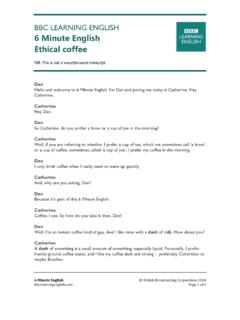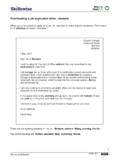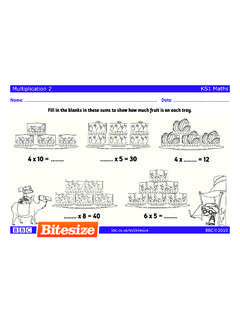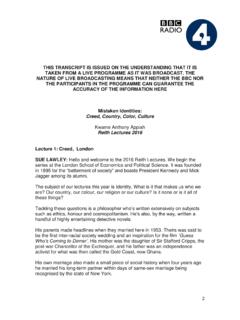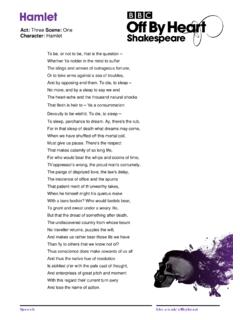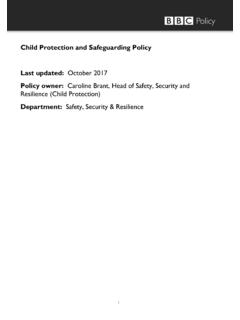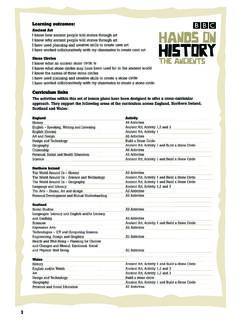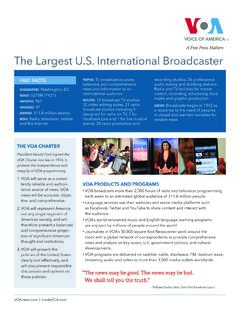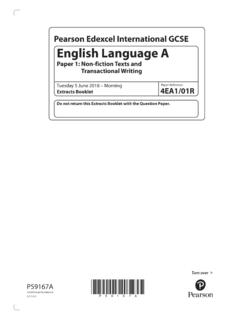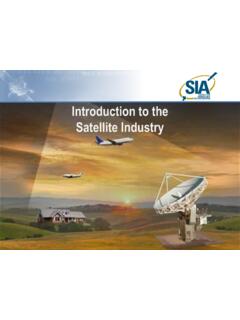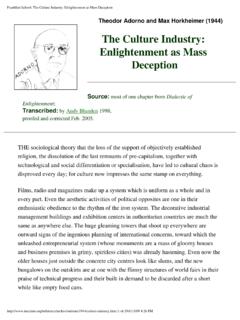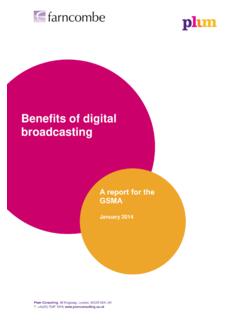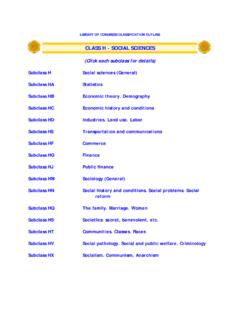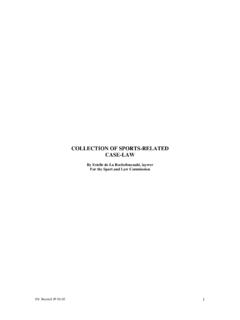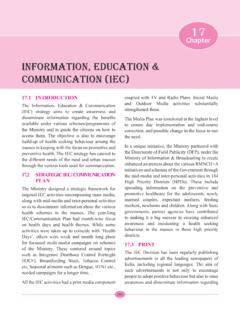Transcription of The Spectrum And Its Uses primer final - Logo of the BBC
1 The Spectrum and Its Uses - A simple guide to the radio Spectrum - September 2006 2 BBC 2006 This document has been produced for information and research purposes only and it is not a statement of policy by the BBC. This document does not consitute legal, commercial or technical advice. The whole or any part of this document may be reproduced in any material form but nothing in this document should be presented as the opinion of the BBC. 3 Executive Summary The radio Spectrum is a scarce resource. The advent of digital services, which use Spectrum more efficiently than analogue services, will make Spectrum available for new, innovative services. But Spectrum scarcity will not disappear.
2 Broadband wireless access, mobile TV and local TV programme services are just some of the newly-developing services which will need Spectrum in the years immediately ahead. High Definition TV and new developments in digital radio broadcasting may be offered to the public before long. Radio waves do not respect international borders, buildings or each other. We are a long way away from a world where different types of services would compete for your attention while using the same frequencies. international harmonisation sets out rules for each Spectrum band. Bilateral international co-ordination and national Spectrum planning ensure that different services do not interfere with each other (so that, for instance, you do not pick up walkie-talkie conversations on your mobile phone).
3 Recent years have seen a distinct move by the Government towards the use of market forces ( through the auctioning of Spectrum ) in place of the Government deciding which companies should be given licences to provide services. Even so, those responsible for Spectrum planning face difficult decisions. How, in particular, should they decide what is the right balance between making Spectrum available for companies providing commercial services, and ensuring universal availability of public services such as free-to-air broadcasting ? This document explains the technical terms associated with the Spectrum ; it sets out how Spectrum planning takes place in the UK; it discusses the "Digital Dividend" as we move away from delivering some services in analogue form, and it describes the different services that might take advantage of that dividend.
4 4 Introduction New developments in broadcast and mobile communication technologies have increased the demand for radio frequency Spectrum , a finite natural resource. Pressure is growing on the regulators and current users to accommodate more and more services. Mobile TV, wireless broadband and enhanced mobile phone services, additional television channels and High Definition Television (HDTV) are all lining up to be launched. Experts generally agree that if all existing analogue services were provided in a digital format, their Spectrum need would be one quarter of their current take-up. In other words, three quarters of the currently occupied Spectrum could become available to be used for other services.
5 But it is a bit more complicated than that. Different technologies work better in particular parts of the Spectrum . Certain frequency bands will remain occupied by current users while others will be cleared for new uses. Historic developments, technical and economic considerations as well as European harmonisation of Spectrum use play a part of the equation. What is Spectrum ? The electromagnetic Spectrum incorporates the range of all electromagnetic radiation, and extends from electric power at the long-wavelength end to gamma radiation at the short-wavelength end. In between, we find radio waves, infra-red, visible light, ultra violet and X-rays used in medical diagnostics.
6 In principle, the Spectrum is claimed to be the size of the universe itself but its different parts are limited to certain ranges of electromagnetic waves. Electromagnetic waves are defined by their special characteristics, such as frequency, wavelength and amplitude. The frequency refers to the number of waves generated in a set period of time and is measured in hertz (Hz). 1 Hz means one wave per second, 1 kHz (kilohertz) means one thousand waves per second, 1 MHz (megahertz) means one million waves per second, 1 GHz (gigahertz) means one billion waves per second and so on. Wavelength is the distance between two waves. There is a fixed mathematical interrelation between the frequency and the wavelength.
7 The higher frequencies have shorter wavelengths and the lower frequencies have longer wavelengths. The wavelength also indicates the ability of the wave to travel in space. A lower frequency wave can reach longer distances than a higher frequency wave. Radio waves are usually specified by frequency rather than wavelength. The radio frequency Spectrum (which is simply referred to as Spectrum ) is only a comparatively small part of the electromagnetic Spectrum , covering the range from 3 Hz to 300 GHz. It includes a range of a certain type of electromagnetic waves, called the radio waves, generated by transmitters and received by antennas or aerials. 5 Figure 1. Electromagnetic wave How radio Spectrum works The radio Spectrum is the home of communication technologies such as mobile phones, radio and television broadcasting , two-way radios, broadband services, radar, fixed links, satellite communications, etc.
8 Due to its excellent ability to carry codified information (signals). It is relatively cheap to build the infrastructure which can also provide mobility and portability. Depending on the frequency range, the radio Spectrum is divided into frequency bands and sub-bands, as illustrated in Figure 2. Appendix A lists all the radio frequency bands and their general uses. Figure 2: Frequency bands and sub-bands In theory, different communication technologies could exist in any part of the radio Spectrum , but the more information a signal is to carry, the more bandwidth it needs. In simple terms, bandwidth is the range of frequencies that a signal occupies in Spectrum . For example, an FM radio station might broadcast on the MHz frequency, but requires MHz (equivalent of 300 kHz) bandwidth the Spectrum between the frequencies and MHz inclusive.
9 Other stations cannot broadcast on these frequencies within the same area without causing or receiving interference. For planning purposes, the Spectrum bands are divided into channels. The bandwidth of Spectrum channels can vary band by band. VHF Band II, the home of FM radio, for instance, is sliced up in 100 kHz-wide channels. An FM station requires 300 kHz bandwidth, therefore each FM radio station takes up three Spectrum channels. In the case of television broadcasting , the agreed bandwidth of a channel is 8 MHz in UHF Band IV/V. The bandwidth requirement of an analogue TV programme channel happens to be the same as the bandwidth of one Spectrum TV channel, 8 MHz. 6 Lower frequencies have less bandwidth capacity than higher frequencies.
10 It means that signals that carry a lot of information (such as television, broadband or mobile phones) are better placed in the higher frequency bands while simple radio (audio) signals can be carried by the low frequency waves. Since low frequencies travel long distances but have less bandwidth capacity, placing one television channel (which uses a lot of bandwidth) in the UK in the lower frequency bands would mean that most of the Long Wave and medium Wave radio services from Northern Europe to Sub-Saharan Africa would be squeezed out. Once a radio signal has been transmitted, it has certain propagation characteristics associated with its frequency. Propagation describes the behaviour of a radio wave in Spectrum .
